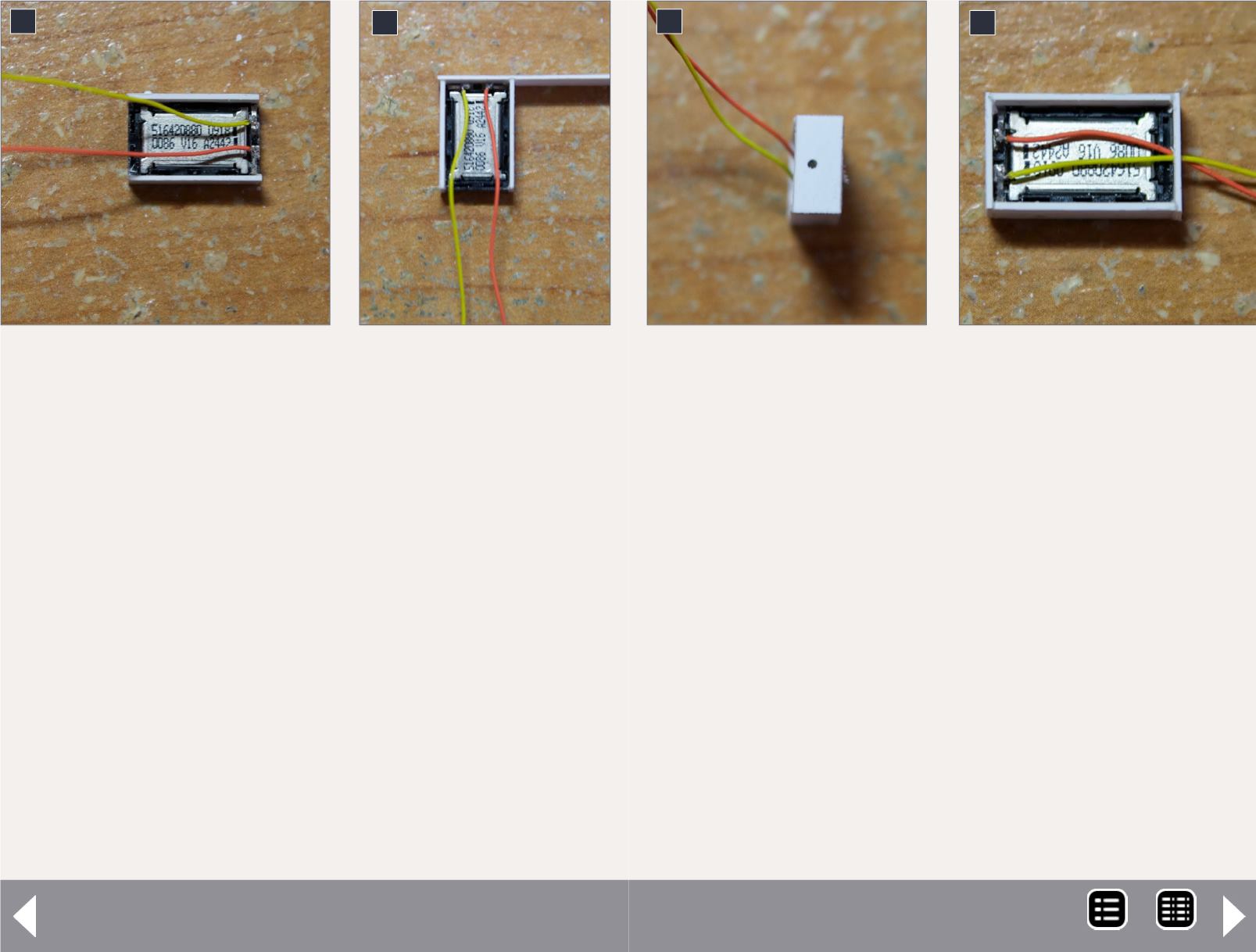
the styrene sheet, use a brush to brush liquid styrene cement
around all the edges, and let dry. When dry, cut away the rest
of the bottom sheet, and you have a nice, air-tight speaker
enclosure.
Install the decoder and speaker
Because of the limited space available in N-scale diesels, creat-
ing enough room for the decoder and speaker usually requires
some frame modification and some sanding of the inside of the
shell. Putting a sound decoder and speaker in an N-scale RS-11
is about as complex an installation as one is likely to face. The
general process of locating the speaker, locating the decoder,
and wiring the decoder to the speaker will apply to any sound
installation.
Shell preparation
The shell of the RS-11 needs holes to allow sound egress; a
bit of thinning inside at the front to create additional space
for the decoder, and some trimming of the plastic number
board/headlight inserts to create additional linear space for
the decoder and speaker. First, I trim back the rear part of the
number board inserts.
Next, I thin out the front of the shell just a bit using a 1/4” 250-
grit sanding drum on a Dremel. The stock shell has about 10.3
mm of space inside, and the LokSound decoder is 10.6 mm
wide; so I thin the shell by about .3 mm. I use digital calipers to
measure, but you can use the decoder to test the fit.
7
7. The first short side
of the box is attached,
ready to be trimmed to
length.
6
6. Both long sides trimmed
to length.
9
9. The sides of the
speaker box are
finished. The wires feed
through the hole.
8
8. A small hole is drilled
in the last side, to feed
the wires through.
N scale sound - 4
MRH-Dec 2014


